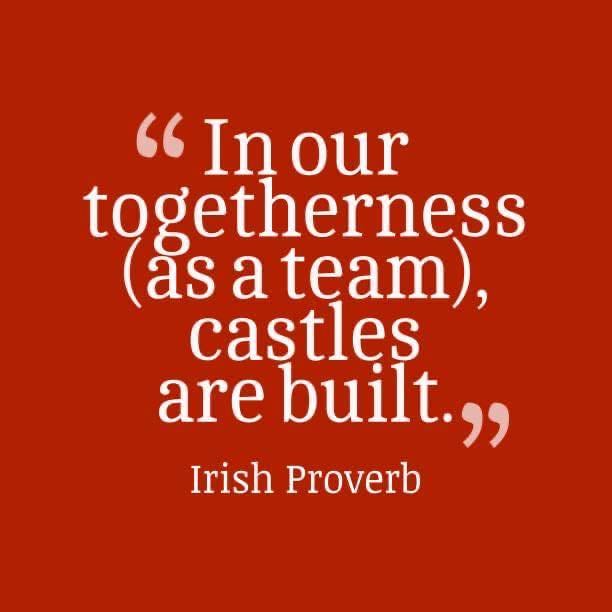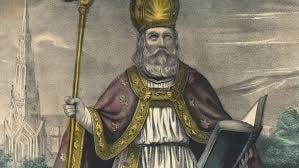St. Patrick’s Day: A Decolonized History of Ireland’s Patron Saint & the Erasure of Indigenous Irish Traditions
Irish History Through the Lens of Rebellion & Resistance
Today, the world dresses in green, drinks pints, and celebrates Ireland’s most famous holiday. But how many people truly know the history behind St. Patrick’s Day?
How many know that it is not just a day of Irish pride but also a day that marks the erasure of Ireland’s pre-colonial spiritual traditions?
How many know that the man credited with “driving out the snakes” from Ireland wasn’t battling literal serpents—but rather, the Indigenous spiritual traditions and practices that predated Christianity?
This is not just a holiday. It is a history of conquest, of forced conversion, of cultural erasure, and of survival.
So today, let’s honor St. Patrick’s Day by telling the truth.
Who Was St. Patrick?
The story of St. Patrick, Ireland’s patron saint, has been wrapped in myth, but at its core, it is a story of colonization and religious conquest.
Born in Roman Britain (likely in what is now Wales), Patrick was kidnapped by Irish raiders at 16 and enslaved in Ireland for six years.
After escaping, he became a Christian priest and returned to Ireland as a missionary to convert the Irish to Christianity.
He used political alliances and religious coercion to spread Christianity, working with the emerging British influence in Ireland.
But the most famous part of Patrick’s legend—the claim that he “drove the snakes out of Ireland”—is the most revealing.
The Snakes Weren’t Snakes—They Were Druids
Ireland never had snakes. The phrase “driving out the snakes” is widely understood as a metaphor for the suppression of the Druids—the spiritual leaders and wisdom-keepers of Indigenous Irish traditions.
Before Christianity, Ireland had a deeply rooted spiritual system connected to the land, the seasons, and the cosmos. The Druids were the caretakers of this knowledge.
They led ceremonies for solstices, equinoxes, and sacred fire festivals like Beltaine and Samhain (which later became Halloween).
They were herbalists, healers, astronomers, and keepers of oral traditions.
They resisted the Romanization and Christianization of Ireland for centuries.
Patrick’s mission was not just to spread Christianity—it was to replace the spiritual traditions of Ireland with Christian doctrine.
The “snakes” that were driven out were the spiritual leaders of pre-Christian Ireland.
And this was not just religious conversion. It was the beginning of Ireland’s colonization.
Christianity as a Tool of Empire
Patrick’s work in converting the Irish did not exist in a vacuum.
Christianity was already a tool of Roman imperialism—used to bring conquered people under religious and political control.
Missionaries like Patrick paved the way for British influence in Ireland, softening the land for future colonization.
By outlawing Druidic practices and replacing them with Christian doctrine, the British and the Catholic Church laid the groundwork for cultural control.
This was the first colonization of Ireland—not by British swords, but by the Bible.
And we see this pattern across the world.
The Black-Irish Connection: Christianity & Colonial Erasure
What happened in Ireland was not unique.
The Christianization of Africa – Indigenous African spiritual traditions were and continue to be demonized by European missionaries, replacing them with Christianity to justify colonial rule.
The Christianization of Indigenous Peoples – Native American and First Nations children were kidnapped and placed in residential schools where they were beaten for speaking their languages and forced to convert.
Christianity & Enslavement – Enslaved Africans were stripped of their spiritual traditions and forced to adopt Christianity—though they often infused it with their own ancestral practices in secret.
Wherever empire has spread, it has used religion as a weapon to erase, control, and dominate.
And yet—just as in Ireland—people resisted.
How Irish Traditions Survived Christianization
Despite St. Patrick’s efforts, Ireland’s Indigenous traditions never fully disappeared. Instead, they were woven into Christianity in ways that still survive today.
Brigid the Goddess became St. Brigid – The beloved Celtic goddess of fertility, healing, and poetry was “converted” into a Christian saint.
Pagan fire festivals became Christian holidays – Samhain became Halloween, Imbolc became Candlemas, Lughnasadh became Lammas.
Sacred wells & stone circles were rebranded as Christian sites – Places once used for Druidic rituals became pilgrimage sites for Catholic saints.
Though Christianity took hold, the soul of Irish spirituality never fully died.
It survived in whispers, in folklore, in the quiet reverence for the land that never faded.
And today, many Irish people are reclaiming that ancestral knowledge—rediscovering the spiritual practices that predate colonization.
Reclaiming St. Patrick’s Day: A Call to Remember
St. Patrick’s Day should not just be about wearing green and drinking.
It should be a day to remember what was lost, what survived, and what can be reclaimed.
✔ Honor the ancestors who held onto their traditions in secret.
✔ Learn about Indigenous Irish spirituality—before it was erased.
✔ Recognize that colonization is not just about land—it is about identity.
✔ Understand that this same pattern happened across the world—and is still happening today.
Final Reflection: Ireland Has Never Been Conquered
British history books may call St. Patrick the savior of Ireland, the one who “tamed the wild Irish” and “brought them into civilization.”
But the Irish were never wild. They were free.
And despite centuries of conquest, oppression, and forced erasure—Ireland has never been conquered.
Because Ireland still exists.
Not just as a country, but as a people.
As a memory.
As a song.
As a story.
As a fight for sovereignty that still burns today.
So today, when you see the sea of green, when you hear the music, when you celebrate Irish culture—remember what they tried to erase.
And remember that we are still here.
Further Learning: Watch, Read & Engage
📺 Watch:
The Last Druid – A documentary about the survival of Ireland’s pre-Christian traditions.
📖 Read:
Pagan Celtic Ireland by Barry Raftery – A deep dive into the Indigenous spiritual practices of the Irish before Christianization.
The Druids: A History by Ronald Hutton – Explores who the Druids were and how they resisted empire.
Engage:
Visit a sacred site in Ireland—many of which existed long before Christianity.
Research Indigenous spiritual practices—not just in Ireland, but in your own lineage.
Ask yourself: What stories have been erased from my own ancestry?
Support This Work: Keep History Alive
This article, like all in this series, is free for the month of March. But after that, they will only be available through 59 Days of Resistance: A Journey Through Black and Irish Liberation.
Get the full curriculum here: 👉 59 Days of Resistance Guide
Become a paid subscriber to continue learning. If finances are a barrier, email me at Scholarships@DesireeBStephens.com.
Because remembering is resistance.
And resistance is how we reclaim what was stolen.
In solidarity and liberation,
Desireé B. Stephens CPS-P
Educator | Counselor | Community Builder
Founder, Make Shi(f)t Happen






I did not know, though I had some limted understanding of Christianities colonisation of Druid holidays. I never made the connection/ inquiry about St pats. Though, never been a fan of any of it.
I have recently been learning about the IRA Resistance. Seems an important time for history, from those who resisted.
Thank you ❤️🔻🔥